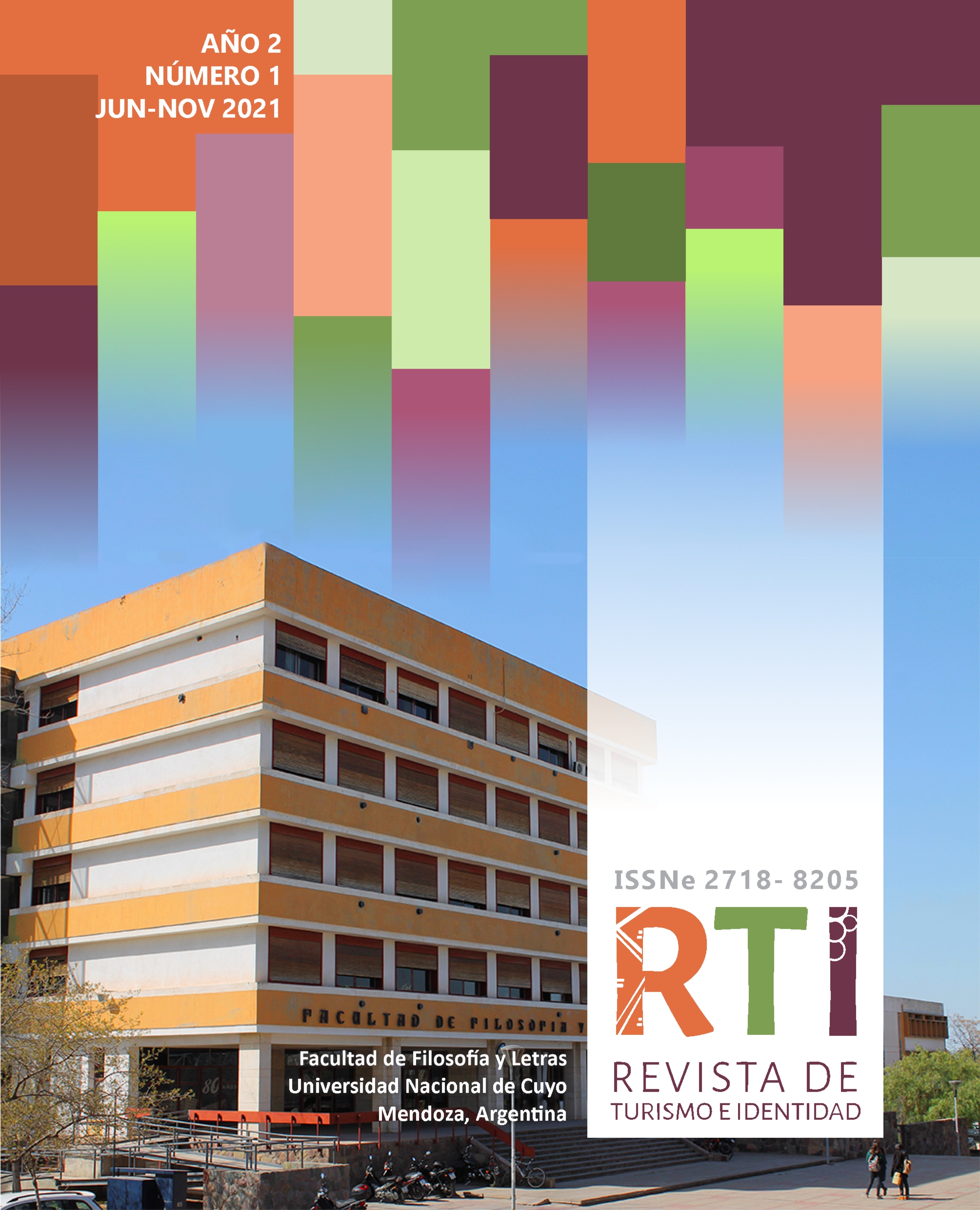Sentiment analysis using the social network Twitter What did tourists feel flying in 2020 with selected southamerican airlines?
Keywords:
machine learning, tourism 2020, sentiment analysis, airline industry, twitterAbstract
Activation of tourism is one of the key subjects for the airline industry. Internet contains a lot of information about tourists. This paper aims at analyzing the opinion of the tourists who traveled by certain South America airlines, using the sentiment analysis technique, employed in the study of their messages. The resource used for analysis is the information in twitter, provided by these airlines customers. First, a method for extracting published phrases related to target locations and "hashtags" was presented. Then, it was analyzed the polarity of the tweets extracted; creating positive, negative and eventually neutral opinions. In this process, there was utilized an unsupervised learning technique using seed words. The experimental result on the classification shows the efficacy of the applied method. Preliminary (descriptive) results as well as the basic proposal for a predictive model are herein attached.
References
Balabantaray, R., Mohammad, M. & Sharma, N. (2012): Multi-class twitter emotion classification: a new approach, Int. J. Appl. Inform. Syst. 4 (1), 48–53.
Go, A., Bhayani, R. & Huang, L. (2009): Twitter sentiment classification using distant supervision, in: CS224N Project Report, Stanford 1, 12.
Hermanto, D., Ziaurrahman, M., Bianto, M. & Setyanto, A. (2018): Twitter Social Media Sentiment Analysis in Tourist - Destinations Using Algorithms Naive Bayes Classifier, Journal of Physics, p. 2.
Higashiyama, M., Inui, K. & Matsumoto, Y. (2008): Acquiring noun polarity knowledge using selectional preferences. 14nd Annual Meeting of the Association for Natural Language Processing, pp. 584– 587.
Kazutaka, S., Inoue, S., Maeda, H. & Endo, T. (2009): Analyzing Tourism Information on Twitter for a Local City, Hiroshi Maeda and Tsutomu Endo, Department of Artificial Intelligence, Kyushu Institute of Technology, p. 5.
Kobayashi, N., Inui, K., Matsumoto, Y., Tateishi, K. & Fukushima, T. (2004): Collecting evaluative expressions for opinion extraction. Proceedings of the First International Joint Conference on Natural Language Processing, pp. 584–589.
Lai, C., Tao, Y., Xu, F., Wing, W., Jia, Y., Yuan, H. & Locatelli, G. (2019): A robust correlation analysis framework for imbalanced and dichotomous data with uncertainty. Information Sciences. pp. 58–77.
Mohammad, S.M., Kiritchenko, S. & Zhu, X. (2013): NRC-Canada: building the state-of-the-art in sentiment analysis of tweets, in: Joint Conference on Lexical and Computational Semantics.
Pang B., Lee L. & Vaithyanathan S. (2002): Thumbs up? sentiment classification using machine learning techniques. Conference on Empirical Methods in Natural Language Processing, pp. 79–86.
Pang, B. & Lee, L. (2008): Opinion mining and sentiment analysis. Foundations and Trends in Information Retrieval.
Pozzi, F.A., Maccagnola, D., Fersini, E. & Messina, E. (2013): Enhance user-level sentiment analysis on microblogs with approval relations, in: AI*IA 2013: Advances in Artificial Intelligence, Springer, New York, pp. 133–144.
Pozzia, F.A., Fersinib, E., Messinab, E. & Liuc, S. (2017): Challenges of sentiment analysis in social networks: an overview, Sentiment Analysis in Social Networks, pp. 16-17.
Rokach, L. & Maimon, O. (2008): Data mining with decision trees: theory and applications. World Scientific Pub.
Saito, H. (2011): Analysis of tourism informatics on web. Journal of the Japanese Society for Artificial Intelligence, pp. 234–240.
Shafer, J., Agrawal, R. & Mehta. M. (2000): A Scalable Parallel Classifier for Data Mining. Springer.
Shimada, K., Yamaumi, M., Tadano, R., Hadano, M. & Endo, T. (2010): Interactive aspect summarization using word-aspect relations for review documents. 5th International Conference on Soft Computing and Intelligent Systems and 11th International Symposium on Advanced Intelligent Systems, pp. 189–188.
Simon, D. & Gómez, M. (2014): Customer Satisfaction, Competition, and Firm Performance, Managerial and Decision Economics. Vol. 35, No. 6, pp. 371-386.
Tan, C., Lee, L., Tang, J., Jiang, L., Zhou, M. & Li, P. (2011): User-level sentiment analysis incorporating social networks, in: Proceedings of the 17th ACM SIGKDD International Conference on Knowledge Discovery and Data Mining, ACM, pp. 1397–1405.
Tang, D., Wei, F., Yang, N., Zhou, M., Liu, T. & Qin, B. (2014): Learning sentiment-specific word embedding for twitter sentiment classification, in: Annual Meeting of the Association for Computational Linguistics.
Tokuhisa, M., Okumura, H. & Murata, M. (2011): Sentiment analysis of weblog articles to support tourism development. Journal of Society for Tourism Informatics, 7(1), pp. 85–98.
Turney, P. (2002): Thumbs up? or thumbs down? semantic orientation applied to unsupervised classification of reviews. 40th Annual Meeting of the Association for Computational Linguistics, pp. 417–424.
West, R., Paskov, H.S., Leskovec, J. & Potts, C. (2014): Exploiting social network structure for person-to-person sentiment analysis, Trans. Assoc. Comput. Linguist. 2, pp. 297–310.
Downloads
Published
How to Cite
Issue
Section
License
Quienes envíen trabajos a la Revista de Turismo e Identidad, que edita el Instituto de Investigaciones en Turismo e Identidad (IITI) de la Facultad de Filosofía y Letras de la Universidad Nacional de Cuyo (Mendoza, Argentina), otorgan automáticamente licencia no exclusiva y sin límite temporal de su manuscrito a dicha publicación. En consecuencia, como la distribución de la citada Revista no tiene finalidad lucrativa sino académica, el autor (los autores) autoriza(n) a la misma la difusión gratuita en formato impreso y medios electrónicos, tanto en red local como por vía internet.
Se establece que:
- Los/as autores/as conservarán sus derechos de autor y garantizarán a la revista el derecho de primera publicación de su obra.
- Los/as autores/as deben adherir a la Licencia Creative Commons Atribución-NoComercial-CompartirIgual 4.0 Internacional, a menos que se indique lo contrario, mediante la cual el autor permite copiar, reproducir, distribuir, comunicar públicamente la obra sin propósitos comerciales, por cualquier medio o formato. También, se pueden generar nuevas obras derivadas, siempre y cuando se cite y reconozca al autor original y su primera publicación en esta revista.
- Los/as autores/as podrán adoptar otros acuerdos de licencia no exclusiva de distribución de la versión de la obra publicada (p. ej.: depositarla en un archivo telemático institucional o publicarla en un volumen monográfico) siempre que se indique la publicación inicial en esta revista.
- Se permite y recomienda a los/as autores/as difundir su obra a través de Internet (p. ej.: en archivos telemáticos institucionales o en su página web) luego de su publicación, lo cual puede producir intercambios interesantes y aumentar las citas de la obra publicada. (Véase El efecto del acceso abierto).















